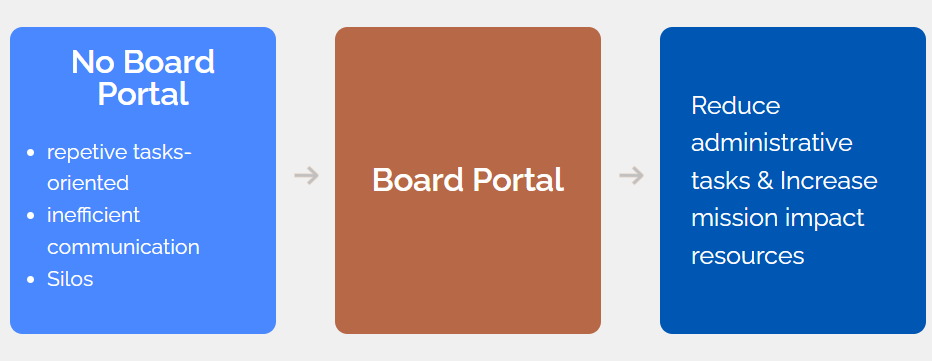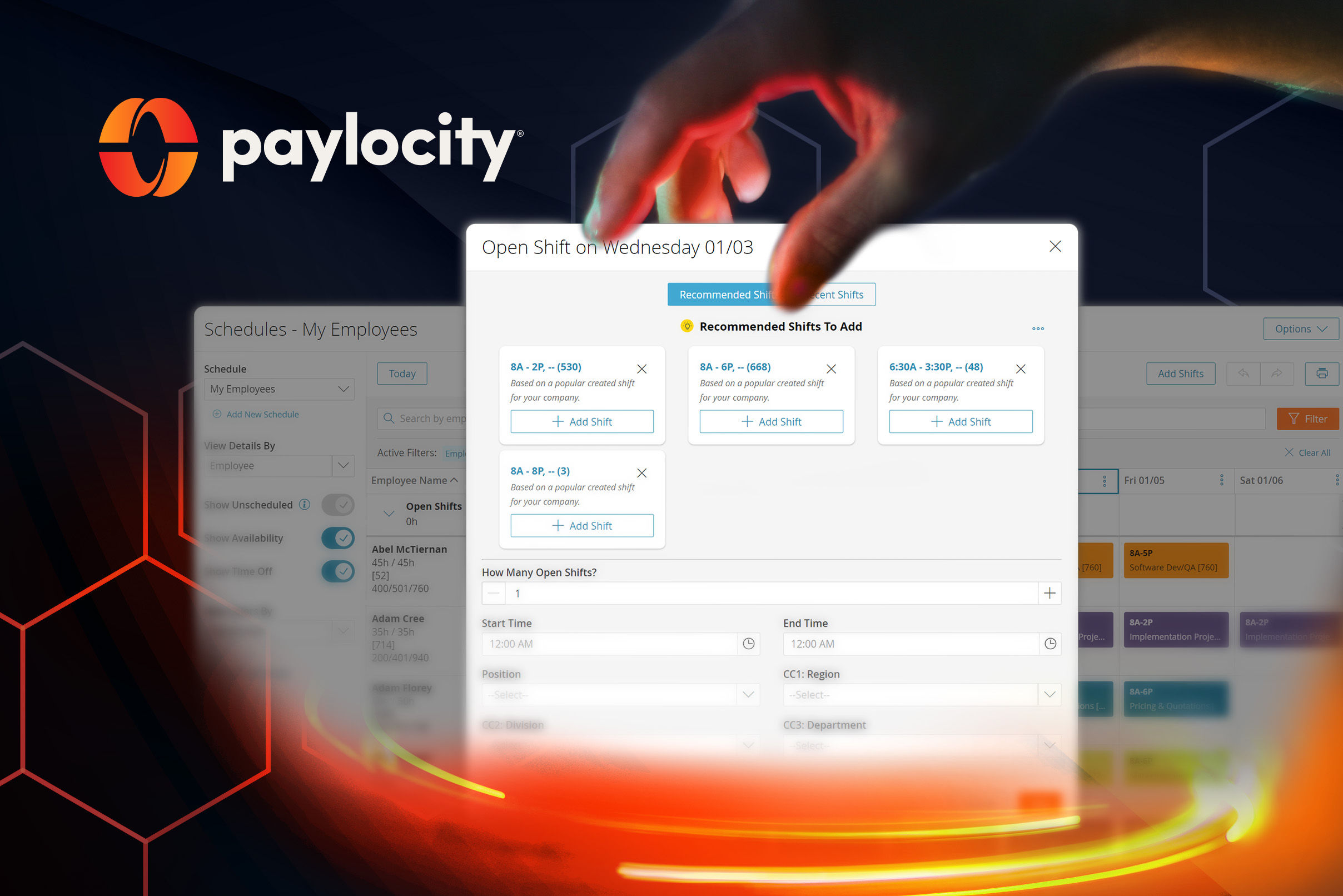In the first installment of “How a Board Portal Improves Social Impact,” I discussed three ways in which this can occur – Programs and Fundraising, Board Engagement, and Recruiting. In this installment, I will provide specific examples of how a board portal can have a positive impact on an organization’s programs and fundraising.
The illustration below is a high-level view of how a board portal achieves this impact:
Eliminate Unnecessary Tasks, Improve Communication, Increase Security
Organizations that do not utilize a board portal will rely on a variety of methods to maintain and share information. A board portal greatly improves an organization’s ability to reduce inefficiency, streamline communication and improve security.
A board portal will enable several data management activities and repetitive tasks to be eliminated. The efficiencies that result enables an organization to shift staff resources from administrative tasks to other activities, such as programs or fundraising.
Our research shows that even small nonprofit organizations can save upwards of $9,000 a year in recovered staff time. This staff time can then be shifted to other activities such as programs or fundraising. This has the effect of adding $9,000 in resources towards mission-related activities.
This will result in an organization having more resources available to achieve its mission and improve its social impact. Listed below are three immediate benefits that can be gained by implementing a board portal.
Reduce or Eliminate Repetitive Tasks
Administrative staff typically spend time distributing board- and committee-related information before, and after, meetings. This time is significantly reduced.
Improve Communication
Organizations without a board portal typically rely on e-mail, voice mail, text, and / or actual phone calls for exchanging information. A board portal significantly reduces this form of communication,
Improve Security
Organizations without a board portal often rely on spreadsheets and word documents to maintain board-related information. Information may be stored one, or more, staff members’ hard drives and not secured, nor readily available to others. I refer to this as the “silo” effect -information that is used by others, but not readily available. A board portal avoids these potential risks and inefficiency.
$9,000 Average Savings
Our research has shown that even a small- to medium-sized nonprofit can recover approximately $9,000 in staff time by implementing a board portal.
Here are some of the ways that administrative staff can significantly reduce the time spent supporting board-related-activities through the implementation of a board portal:
- Eliminate emailing agendas, committee reports and related documents;
- Eliminate tracking attendee invitations, responses, and reminders;
- Avoid having to email meeting minutes and relevant documents following the board and committee meetings;
- Eliminate responding to emails, voice mails, text messages, and phone calls from board members regarding board and committee meeting dates;
- Reduce the time spent searching for emails and appropriate versions of documents about, board-assigned projects and tasks;
- Reduce the time spent organizing financial documents and converting the data into visually appealing dashboards;
- Eliminate the time spent looking for board-related contact and roster information.
Increase Mission Impact Resources
The staff time recovered above by eliminating unnecessary task can be redeployed to mission impact activities. This can include applying staff resources to program or fundraising activities. Here are some examples.
Increased program-related activities
Staff that are freed from repetitive tasks can be assigned to improve existing programs or even start new programs – large or small – that were not previously possible due to a lack of resources.
Virtually any existing program can be improved by having more resources available to support it. As even greater opportunity to improve mission impact exists by starting a new program that was previously unattainable because of a lack of resources. Even small programs can have a big impact. For example, staff can be assigned to increase community awareness of the organization’s mission.
Fundraising activities
Any increase in staff resources that can be applied to fundraising activities will have a positive impact for the organization. This activity does not have to be directly related to actual fundraising. For example. Staff can be utilized to improve or increase communication with donors and stakeholders.
Administrative personnel can be employed in the planning and execution of fundraising events such as golf outings and annual galas. Staff members that are freed from administrative tasks can be used to do research on local corporations and foundations that provide grants and donations to nonprofit organizations.
Summary
Board portals can improve a nonprofit organization’s social impact through innovative redeployment of resources. For more information, contact Frank Orzo at forzo@bellesboard.com.




